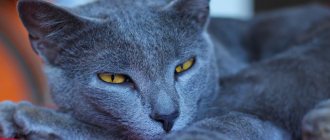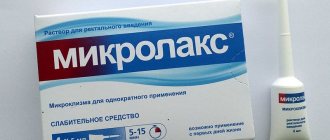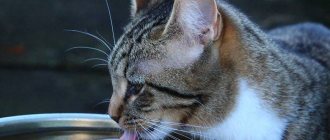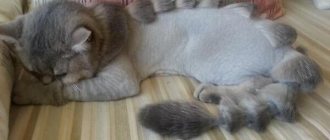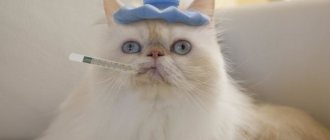Owners of cats often have to watch their pets sneeze or snort. In this case, a cat’s sneezing can be either one-time or multiple. Sneezing itself in cats, like in humans, has a protective function. However, if this physiological process in a cat becomes permanent, the owner needs to pay close attention to the health of his pet. Are there any additional symptoms that are bothering the cat? If these symptoms and lethargy are detected, you should immediately contact a veterinarian.
Why does a cat sneeze at normal body temperature in the absence of other symptoms of illness?
Some cat owners often panic and do not know what to do if the cat sneezes at normal body temperature and normal health. Let us immediately reassure you that in this case there is no reason for special concern. Ordinary house dust can cause your pet to sneeze. The answer to the question why a cat sneezes is often quite simple: the cat’s nasal mucosa is irritated as a result of heavy dust in your apartment. All you need to do is carry out a thorough wet cleaning of the room and this factor that is harmful to the cat and causes sneezing will be eliminated. It will become easier for your pet, and you yourself, to breathe if you additionally get rid of unnecessary old things and carpets that absorb dust.
When figuring out why your cat often sneezes, you definitely need to check your nose for foreign matter. The cat usually removes small foreign objects by sneezing. If it is large, then using tweezers you can try to remove the object yourself. If this cannot be done, you will need to seek help from a veterinary clinic.
However, the process of sneezing in a cat is not always so harmless. The reasons why a cat sneezes can be serious and pose a threat to the animal's health . Such reasons include :
How to treat cat colds
0
0
Although our cats walk on their own, occasionally delighting us with their attention, in society they behave almost like children: when they want to tell us something, it’s difficult to guess what exactly they want. If cats could talk, we would definitely be the first to know that something hurts them and how we can help them. But in the absence of our usual communication, we need to be careful and observe the cat’s behavior, which may directly or indirectly indicate some health problems.
About the cat's nose and runny nose
As you know, a wet and cold nose is an indicator of a cat’s health. A thin layer of mucus on a cat's nose allows it to better recognize odors and, accordingly, hunt. When a cat is unwell, its nose becomes dry and does not recognize odors well, and its appetite decreases during this period. In addition, a wet nose is also a biological filter that prevents microorganisms and dust from entering. If a cat is sick (or if she is dehydrated), the nasal mucosa becomes dry and allows bacteria into the respiratory system.
A cat's runny nose is similar in all respects to a human one, but it is not at all the same thing. A runny nose can be caused by infection, hypothermia, or due to a foreign body or parasites entering the nose of an animal. When you have a runny nose, the glands in the nasal cavity, trying to get rid of irritation, begin to produce mucus. The mucous membrane of the nose swells, the nasal passages narrow, due to which the inhaled air is not warmed up and purified, and in general breathing becomes difficult.
Symptoms of the disease:
- hot dry nose and hot ears;
- weakness, apathy;
- sneezing, coughing or snorting;
- fever, discharge from the eyes and nose;
- decreased appetite or lack thereof.
Cat cold
Although animals have their own naturally warm coats, cold weather can be dangerous for indoor cats. If we go outside in a coat, after a while we still feel cold and damp, and if we stay in this state for a long time, we can easily get sick. Likewise, our pets - in the cold season, can get sick just like their owners, with the only difference being that human colds are not transmitted to cats, and feline colds are not transmitted to people.
If your cat walks outside, then in cold weather she is at risk of getting sick. In late autumn and especially in winter, you should still refrain from such walks. However, even at home you can catch a cold, for example, due to a draft. Short-haired cats and cats without fur - Sphynx cats - are especially susceptible to this risk. The latter generally require more careful care: they cannot stand the cold and even due to a barely perceptible draft they can catch a cold. The temperature in the apartment should be comfortable, and, of course, you should not leave the balcony open or constantly ventilate the room.
What is not recommended in the cold season and off-season
1. If your cat is out and about, make sure it has returned home. And in winter it is generally better to refrain from walking.
2. You should also refrain from bathing your pet. Even if you have bathed your cat, monitor the temperature in the house and drafts, not to mention open balconies.
3. If you ventilate the room, check afterwards to see if you locked your cat on the balcony. No matter how strange it may sound to many readers, some owners inadvertently close the balcony without noticing that the cat has jumped out to get some fresh air.
If your cat rubs its nose with its paw, sneezes and snorts sporadically, it is probably trying to get rid of a foreign body in its nose. Usually cats quickly cope with this on their own, but if you notice that your cat continues to sneeze, contact your veterinarian immediately.
Allergic reactions
A runny nose can also occur due to allergic reactions of the cat's body to specific chemicals that irritate the nasal mucosa. For example, this is not at all surprising if you used ammonia, acid, alkalis and other chemicals in the presence of a cat. You should be careful when cleaning your apartment, because there are plenty of dangers in the house: in the kitchen, in the bathroom, and in the toilet. Dishwashing, bath, toilet detergents, washing powders, sprays and powders against insects, etc. You should be especially careful when cleaning the bathroom and toilet: for some reason cats really like to hide under the bathtub while you are cleaning it . Be sure to check if the cat was accidentally left closed there while cleaning.
Don't forget about the little things either. Even dirt brought into the house on shoes can pose a danger to your pet - the streets are usually sprinkled with reagents that are unlikely to have a beneficial effect on the health of both the cat and the children and adults in the house. Infections and viral diseases
Only vaccinations can protect a cat from dangerous infections. Vaccination is carried out for a kitten at the age of 8-9 weeks, secondary vaccination - 11-12 weeks, subsequent vaccinations - annually.
If you notice that your cat has begun to sneeze or cough, be sure to contact your veterinarian as soon as possible. But even here we should not forget about important little things. When planning a trip to the clinic, many people forget about trivial things: for example, taking a sick pet on public transport, which is strongly not recommended. It is better to go by car (even if you have to call a taxi) or, if possible, call a veterinarian at home.
Only a veterinarian can help with illness - he will be the one who can determine what the cat is sick with and how to treat it. There should be no place for “self-medication” here.
“In principle, cats (and people) do not have a disease called “cold.” As a rule, this word is popularly used to describe a viral infection that affects the respiratory system.
People usually get sick from it easily, but cats, on the contrary, if they get a viral infection and do not receive help in time, they can die. Because their owners associate it with something similar to a cold in people and do not rush to see a doctor.
To reduce respiratory diseases in cats, all healthy cats must be vaccinated annually against the most common infectious diseases, such as rhinotracheitis, calicivirosis and panleukopenia. These viral diseases of cats are not dangerous to people. Cats are not at risk from viruses that cause human respiratory diseases, such as influenza.”
Found a mistake? You can report an error by highlighting it and pressing Ctrl+Enter
Allergic reaction
The most common allergens in cats include air fresheners, laundry detergent, household cleaning products, cat litter, perfumes, perfumes, etc. Often allergies in cats are caused by the presence of mold in the apartment, pollen from indoor and outdoor plants. Smoke can be a strong allergen and irritant for a cat if there is smoking in the apartment. Any aerosols intended to treat cats against skin parasites (fleas in cats) can lead to a sneeze reflex. Sneezing in a cat may occur when the owners used sprays and aerosols to kill insects in the apartment. In case of an allergic reaction, in addition to sneezing and the cat, other symptoms may be observed: itching (dermatitis in cats), lacrimation (conjunctivitis in cats).
Traditional methods of treating a runny nose
At home, runny nose in cats is treated using folk remedies.
To rinse the nasal sinuses use:
- weak salt solution (20 grams of sea salt per glass of boiled water),
- soda solution (half a teaspoon per 200 ml of liquid),
- furatsilin,
- boric acid solution (a pinch per glass of boiled water).
For treatment, instillation is used:
- beet juice (1 drops of freshly squeezed juice per tablespoon of water),
- aloe leaf juice (one drop in each nasal passage 3 times a day).
Inhalations based on fir and eucalyptus oils will help your cat. Pour hot water into the container, add 3-4 drops of medicinal oil, hold the animal near the container for 5-10 minutes.
Infectious diseases
Infectious rhinotracheitis, calcivirus - these diseases are often accompanied by a response from the cat’s body. The herpes virus (the causative agent of infectious rhinotracheitis) affects the mucous membranes, which leads to frequent sneezing. In addition to this symptom, a sick cat has a runny nose, high fever, cough, and conjunctivitis. More details in our article - infectious rhinotracheitis in cats. Calcivirus is also an infectious disease and is characterized by frequent sneezing of the animal, refusal to feed due to the formation of ulcers in the mouth, and damage to the joints. More detailed information about this virus can be found in our article - calicivirus infection of cats. Sneezing can accompany diseases such as feline immunodeficiency virus, feline panleukopenia, chlamydia (feline chlamydia), mycoplasmosis (mycoplasmosis in cats), bordetellosis. These infections occur with increased body temperature, discharge from the eyes, and loss of appetite. Often the reason that a cat sneezes is asthma, in which, in addition to multiple sneezes, there is difficulty breathing, wheezing, and attacks of suffocation.
Worm infestations
Worm infestations that constantly threaten cats can cause sneezing: toxoplasmosis, dirofilariasis.
In the acute form of toxoplasmosis, the cat becomes lethargic, refuses to eat, has a high body temperature, coughing, sneezing, runny nose, lacrimation, shortness of breath, and heavy wheezing breathing. When the nervous system is involved in the pathological process, the cat develops convulsions, muscle tremors, twitching, and in severe cases, paralysis. Sometimes there is a disturbance in the functioning of the gastrointestinal tract (vomiting, diarrhea, constipation). If the liver is damaged, there is an icteric discoloration of the visible mucous membranes. More details about toxoplasmosis in the article – toxoplasmosis in cats.
Dirofilariasis (heart parasites transmitted by mosquito bites) develops in the heart muscle and leads to sneezing, dry cough, shortness of breath similar to asthma, increased fatigue, weight loss, heart failure, upon auscultation - heart murmurs, rapid heartbeat. Read more about this disease in our article - dirofilariasis.
Causes of colds in cats
Cat colds are a series of infectious diseases of the upper respiratory tract. It responds well to treatment, but lack of timely treatment can lead to serious complications. The immune system of cats is quite well developed and often copes with viruses on its own, so colds in cats are not so common. Among the main causes of infection is decreased immunity and contact with virus carriers.
An unbalanced diet, poor maintenance, low ambient temperature, drafts and stress can trigger the development of a cold in a cat.
Symptoms of cat sneezing that should alert their owners
In the case when, along with sneezing, we observe a deterioration in the cat’s well-being, it is necessary to rush to the veterinary clinic, where specialists will determine the reason why the cat is constantly sneezing. When conducting a clinical examination of your cat, a veterinarian excludes a reaction to dust and does not find a mechanical irritant. When visiting a veterinary clinic, specialists will conduct additional tests on the cat to rule out the allergic nature of sneezing. Then you will know why the cat sneezes and what to do to cure it. By leaving things to chance, you can miss serious diseases, many of which threaten human health. For example, a cat infected with toxoplasmosis can cause a miscarriage in a pregnant woman. Prolonged sneezing, accompanied by additional symptoms (cough, runny nose, high fever, vomiting, etc.), is a reason for its owner to immediately undergo a comprehensive examination at a veterinary clinic. Warning symptoms: bloody discharge from the nose when sneezing; sudden weight loss in a cat; growth of ulcers on the body; wool stuck together in clumps; diarrhea; vomiting; purulent nasal discharge and lacrimation; attacks of fever; whistling when breathing; wheezing cough; aggressive attacks towards the owner; photophobia. If you notice even one or two of these symptoms, rush to the veterinary clinic. Timely treatment can quickly help return your pet to the bosom of the family.
What happens when a cat sneezes
Sneezing is a protective natural reaction of the body to the appearance of an irritant in the nasal passages.
A long inhalation when sneezing precedes a sharp exhalation, due to which interfering particles leave the nasal passages. This behavior is typical not only of cats, but of any animal. A single sneeze is not a cause for concern. However, if it occurs regularly, you should take care of your pet’s health.
There is no need to panic and take your cat to the veterinarian immediately. It is necessary to observe the animal’s behavior and determine the presence of accompanying symptoms. This will help the veterinarian determine the correct diagnosis and begin timely, appropriate treatment.
Treating a cat for sneezing
Only a veterinary specialist at the clinic can prescribe the correct treatment for a cat with symptoms of sneezing. If, during a clinical examination of your cat, a veterinarian determines that your cat is clinically healthy, he will recommend that you wet clean your apartment and use a special humidifier.
If the cause of sneezing is allergic in nature, then recommendations will be given to eliminate the allergen present in the apartment or to ensure that household chemicals are inaccessible to your cat. In order to alleviate the condition, a veterinarian will prescribe one or another antihistamine to your animal.
In the case where the cause of sneezing is polyps, it will be recommended to remove them surgically in a veterinary clinic.
If a cat's sneezing is accompanied by an asthmatic attack, antispasmodics, vasoconstrictors and corticosteroids are prescribed.
In case of diseases of the oral cavity (teeth, gums), a sick cat is given dental treatment, tartar is removed (tartar in cats), inflammation of the gums is relieved, and vitamins are prescribed.
If a helminthic infestation is detected in a cat during an examination, the veterinarian will prescribe special anthelmintic drugs.
If the cause of a cat’s sneezing is an infectious disease diagnosed in the clinic’s laboratory, then the sick animal will be prescribed antibacterial and antiviral drugs and immunomodulators.
The oncological cause of sneezing in a cat is eliminated by performing surgery to remove the tumor and prescribing a course of chemotherapy.
Treatment of a runny nose in a cat with medications
When a runny nose is diagnosed, the animal is treated according to the following scheme:
- prescribing antipyretic drugs for fever,
- the use of drops, solutions to facilitate breathing,
- prescribing expectorants for coughs,
- taking vitamins to strengthen the immune system,
- prescribing antibiotics for complications.
Be sure to read:
The cat eats poorly and loses weight: causes, safe and dangerous symptoms, first aid, treatment
Commonly prescribed medications:
- Intranasal drops "Anandin" - stimulate the immune system.
- Naphthyzin nasal spray - used to rinse the nasal passages.
- Xylometazoline nasal drops make breathing easier.
The correct dosage is prescribed by the doctor.
Prevention
If the cat’s sneezing is harmless and caused by the presence of dust in the apartment, then the owners will need to keep their apartment clean and regularly carry out wet cleaning of the room. If sneezing is allergic, owners must protect their pet from the allergen (air freshener, perfume, perfume, washing powder, tobacco smoke, etc.).
An effective way to prevent the infectious component of cat sneezing is to vaccinate animals according to the existing schedule. Starting from six months, you need to follow the vaccination schedule and vaccinate them against: viruses; cat flu; leukemia and leukopenia; rabies.
Oral diseases are prevented by constant monitoring of the condition of the oral cavity and teeth, and timely removal of tartar.
Worm infestations in cats are prevented by regular deworming of the animal with anthelmintics.
The main thing is to undergo regular preventive examinations of your cat at a veterinary clinic in order to detect danger in time and begin timely treatment.
Preventive measures
In order to prevent harmless sneezing in a cat, the animal should be kept in a clean room and wet cleaning should be carried out regularly. Cleanliness in the house will protect your pet from foreign objects getting into the nasal cavity. In case of allergic sneezing, you should protect your pet from the influence of the allergen. An effective method of preventing infectious causes in cats is to vaccinate animals according to a schedule. It is necessary to monitor the condition of the pet’s mouth and teeth and regularly remove tartar. To prevent parasitic causes, the animal should be regularly subjected to deworming (destruction of worms) with special preparations.
Sneezing in a cat is a normal physiological process that helps keep the nasal cavity clean. The owner should pay attention to such a reaction if it is regular and multiple. The presence of other symptoms requires an immediate visit to a veterinarian.
